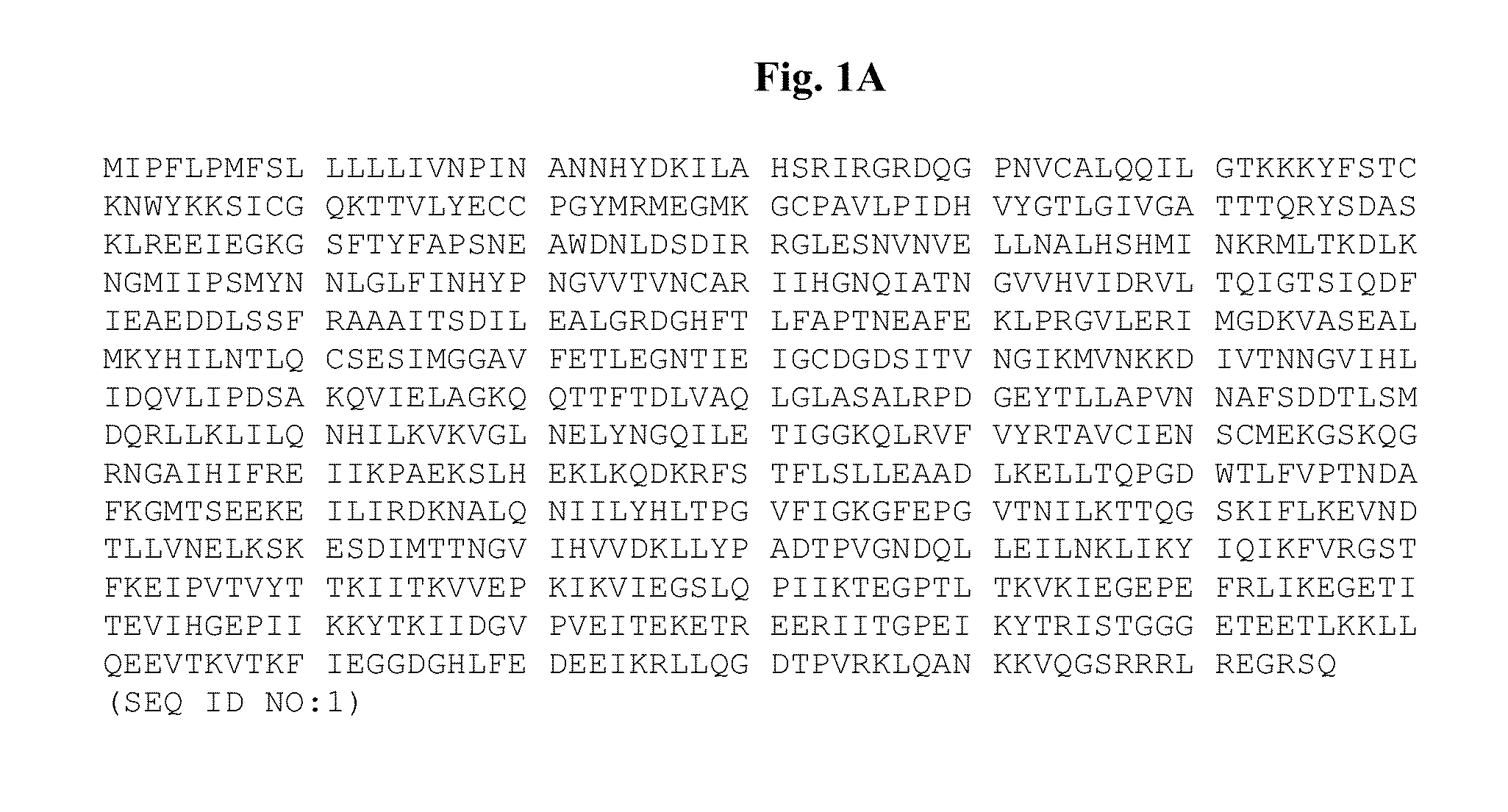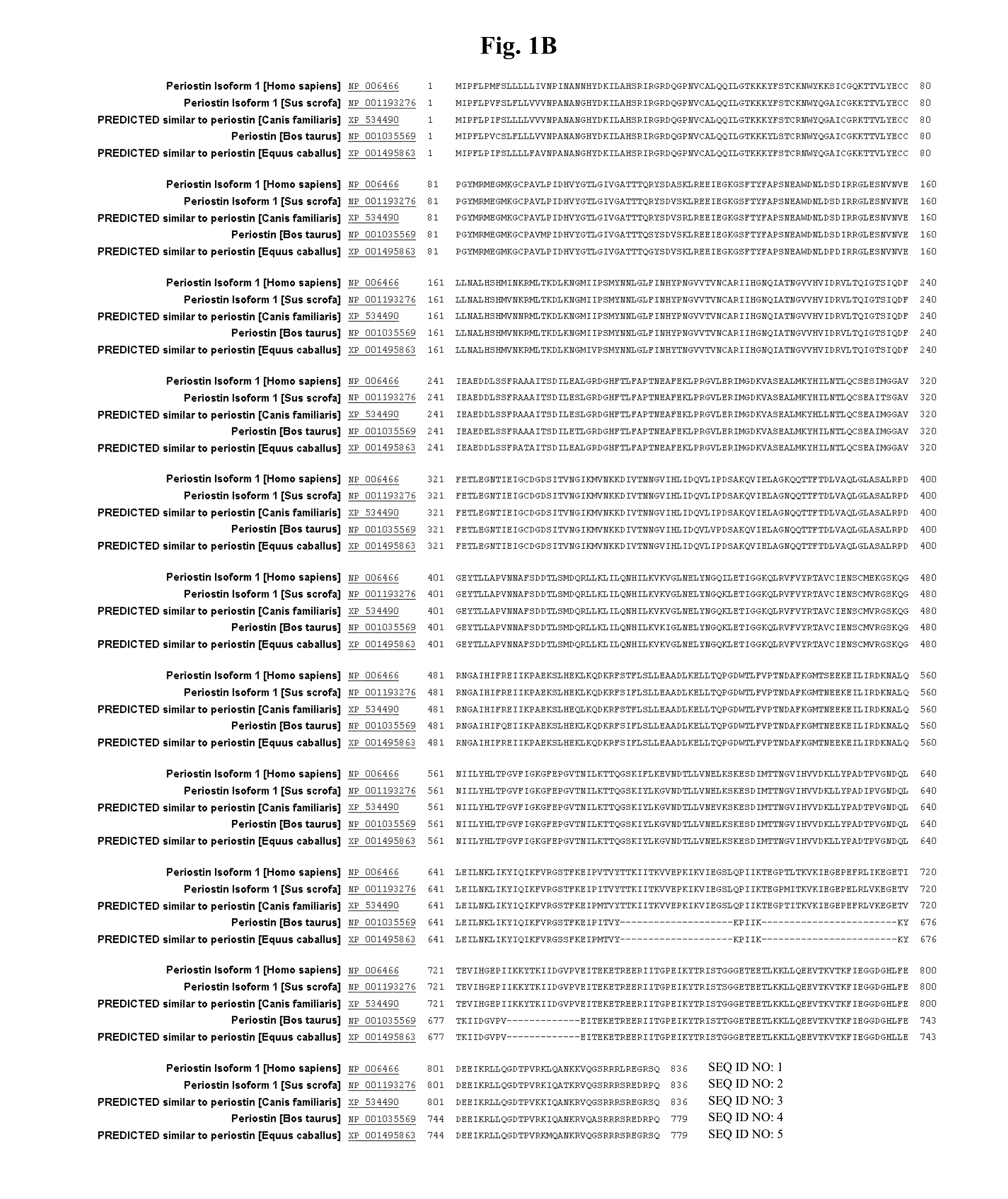Method of treating wounds
a wound and wound technology, applied in the field of wound healing, can solve the problems of amputation of limbs, peri-operative death, inability to progress to the proliferative and remodeling phases required for healing, and all non-healing wounds are stalled, so as to achieve the effect of new and effective wound treatmen
- Summary
- Abstract
- Description
- Claims
- Application Information
AI Technical Summary
Benefits of technology
Problems solved by technology
Method used
Image
Examples
example 1
Periostin and CCN2 are not Expressed in Chronic Wound Tissue
[0045]Materials and Methods:
[0046]Skin samples were obtained with informed consent from patients exhibiting non-healing skin wounds and undergoing elective lower extremity amputation for the affected limb. 18 patients were enrolled with a median age of 71.5 years (ranging from 34 to 88). Of these, four were female. The majority of patients were type-two diabetic (n=15) and one was type-one diabetic. Diagnosis of the patients' condition was almost exclusively peripheral vascular disease, making it likely that the samples collected were representative of arterial wounds. Sets of skin samples were collected from the wound site and proximal to the wound (within 500 μm), as well as from a non-involved region of the limb. At each site, samples were collected for histology, RNA isolation and cell culture, which were immersed in 10% neutral buffered formalin (Sigma Aldrich, St. Louis, Mo.), RNAlater® (Ambion, Carlsbad, Calif.) or g...
example 2
Smooth Muscle Actin (a-SMA) and Pericyte Activation (NG2) are not Expressed in Chronic Wound Tissue
[0049]Materials and Methods:
[0050]Tissues from chronic wound samples (as above) were stained as previously described (Jackson-Boeters et al. J Cell Commun Signal, 3(2):125-33, 2009). Sections were blocked with 10% horse serum and incubated with primary antibody overnight at 4° C. Smooth muscle actin and NG2 were detected on paraffin sections prepared from the tissues using the ABC kit (Vectorstain) following the manufacturer's instructions. The antibodies were diluted 1:3000 for rabbit anti-periostin (Kruzynska-Frejtag at al., 2004), and 1:500 for NG2. Signals were developed using DAB and hydrogen peroxide as the chromogen. Sections were counterstained with methyl green.
[0051]Results:
[0052]In normal healing, both pericytes (progenitor cells located on the outside of blood vessels) and dermal fibroblasts are recruited and differentiate into myofibroblasts in the granulation tissue. Howe...
example 3
Dermal Fibroblasts Isolated from the Edge of Chronic Wounds are Phenotypically Similar to Healthy Dermal Fibroblasts (HDFa) and Non-Involved Dermal Fibroblasts
[0053]Materials and Methods:
[0054]Human dermal fibroblasts were isolated from non-involved and chronic wound edge tissue using an explant technique as previously described in Chen et al. 2008. Arthritis Rheum 58, 577-85. Cells were isolated from non-involved dermis and from the chronic wound edge and their proliferation rates compared to dermal fibroblasts from healthy human skin. Primary murine dermal fibroblasts were seeded at 2000 cells / well in 24 well plates in 10% FBS supplemented media. Media was changed every 48 hours throughout the course of the experiments. At the desired time-points media was completely aspirated and the plate was frozen at −80° C. Once all time-points were captured and all plates were frozen, the plates were allowed to thaw at room temperature. The CyQUANT cell proliferation assay kit (Invitrogen) w...
PUM
| Property | Measurement | Unit |
|---|---|---|
| thickness | aaaaa | aaaaa |
| temperature | aaaaa | aaaaa |
| pH | aaaaa | aaaaa |
Abstract
Description
Claims
Application Information
 Login to View More
Login to View More - R&D
- Intellectual Property
- Life Sciences
- Materials
- Tech Scout
- Unparalleled Data Quality
- Higher Quality Content
- 60% Fewer Hallucinations
Browse by: Latest US Patents, China's latest patents, Technical Efficacy Thesaurus, Application Domain, Technology Topic, Popular Technical Reports.
© 2025 PatSnap. All rights reserved.Legal|Privacy policy|Modern Slavery Act Transparency Statement|Sitemap|About US| Contact US: help@patsnap.com



